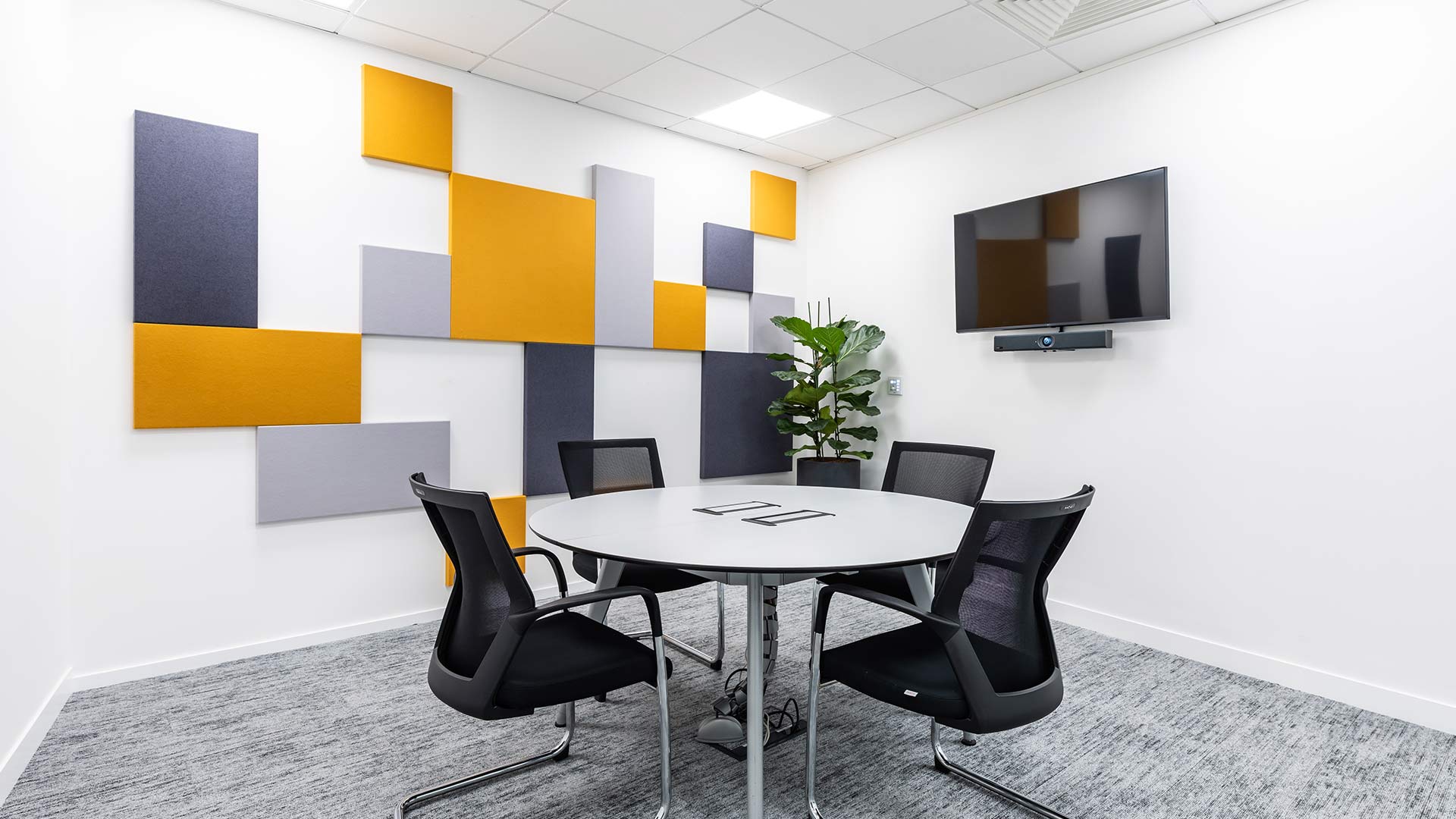5 Reasons Every Workplace Must Have Good Acoustic Design When designing a workplace, there are a multitude of factors to consider – lighting, layout, furniture, and technology, to name just a few. However, one crucial element that’s often overlooked is acoustic design – to quote Julian Treasure: Sound affects us psychologically, cognitively and behaviourally, even though we’re… Read More »5 Reasons Every Workplace Must Have Good Acoustic Design
Knowledge Base
5 Ways To Implement Acoustic Baffles In Workspace Designs
5 Ways To Implement Acoustic Baffles In Workspace Designs It’s no surprise that sound distractions have a direct effect on employee productivity. Fortunately, there are many ways acoustic materials can be applied to create acoustically comfortable spaces and implementing ceiling-hung baffles is one of the popular methods designers use. Having the right combination of absorption materials… Read More »5 Ways To Implement Acoustic Baffles In Workspace Designs
5 Ways Workspace Designers Can Create Effective Acoustic Schemes with Acoustic Wall Panels, Ceiling Baffles, and Ceiling Rafts
5 Ways Workspace Designers Can Create Effective Acoustic Schemes with Acoustic Wall Panels, Ceiling Baffles, and Ceiling Rafts
The Open Plan Office Acoustic Standards 2022
The Open Plan Office Acoustic Standards 2022 Open plan offices have become increasingly popular in recent years due to their cost effectiveness and convenience. However, the large open spaces can lead to many acoustic issues including noise distraction, reverberation and poor speech intelligibility. The Open Plan Office Acoustic Standards 2022 is a set of guidelines that… Read More »The Open Plan Office Acoustic Standards 2022
“Acoustic Timber Slats” are Fake News
We often get asked about acoustic ceiling slat systems made from timber, and our response is always the same - they simply do not work. A bold claim? Not really - it’s about scientific fact...
How Tempo Works
What makes Tempo the most effective sound absorbing slat system on the market? Well, it works by trapping sound within the cavity in-between the separate panels, helping to reduce reverberation.
Sound Absorption – Values & Classes
Sound absorption properties are measured by the sound absorption coefficient, α, (alpha), as a function of the frequency. Alpha (α) ranges from 0 to 1.00 (from total reflection to total absorption).
Reverberation Time and Acoustic Comfort
Reverberation Time (RT) is the time required for the average sound pressure in a room to decrease 60 decibels after a source stops generating sound. This approximates to the time taken for a signal to decay to a level imperceptible to the human ear.
Noise – Dealing With it at Source
One of the biggest challenges in workspaces of today is controlling noise transfer across and between spaces. It would seem obvious that open-plan space is a perfect place for noise to travel and, whilst this is true, meeting rooms are also an acoustic challenge.
Acoustic Standards – The Basics
There are many regulations and standards covering acoustics in non-residential buildings. In this Knowledge Base article, we briefly introduce the most commonly referred to documents.
Sound Insulation – The Basics
Sound insulation is concerned with slowing or stopping sound waves by physically blocking their travel from one room to another. Success in achieving effective sound insulation – or attenuation – in the workspace is reliant on the usage of the space, the building structure, the type of ceilings and partitions, and attention to detail. We focus here on office space.
The ABC’s of Acoustic Design
When designing an optimal acoustic environment, architects consider a variety of elements to address noise control and speech privacy. All of the ABC’s of acoustic design can be used together or individually to achieve the desired acoustic environment.
Decibels (dB’s) Explained
The decibel (symbol dB) is a unit of measure for volume (or amplitude) of sound. The dB tells us the energy (volume) in a sound wave. In layman’s terms its the “loudness” of sound.
Acoustic Design Guidelines
It’s so easy to deliver improved acoustic comfort. Introducing Class A absorbent material equivalent to 25% of the total wall areas will exponentially improve acoustic comfort. Take a look at these examples.
When To Use Soundmasking
Sound masking is the inclusion of generated sound into an environment to mask unwanted sound (noise).
Sound Diffusion Explained
When a sound wave hits a smooth flat surface it will bounce off that surface at the same angle at which it reached it. For example, a sound wave hitting a glass panel at 45 degrees will bounce off it at 45 degrees. But when a sound wave hits an uneven or irregular surface it will reflect off each part of that surface at the angle in which it hit therefore dispersing the waves in multiple angles, evenly disseminating (or diffusing) the sound through the given space.
I Need a Class A Absorber – What Are My Options?
Often times a designer knows they need some acoustic absorption product - and their first stop is to call out the Class A absorbency rating; not necessarily knowing what it means but understanding enough to know its the highest acoustic absorbency rating possible.
Sound Masking – What is it and How Does it Work?
Sound masking is the inclusion of generated sound (commonly, though inaccurately, referred to as "white noise" or "pink noise") into an environment to mask unwanted sound (noise).
Achieving Optimal Acoustics in a Videoconferencing Room
In this current Covid era, we have become a lot more accustomed to the use of video-conferencing situations. Small room acoustics is becoming a major issue because small spaces can present acoustic surprises.
Acoustics in Learning Spaces
Poor acoustics inside classrooms not only negatively impacts the ability of students to learn but also impacts the ability of the teacher to teach. Speaking and listening in learning environments is critical and the way classrooms perform acoustically has a significant influence on learning outcomes.
Acoustic Benefits of Biophilia in the Workplace
Interior designers are therefore introducing biophilic design to combat urbanisation and reconnect people with nature.



















